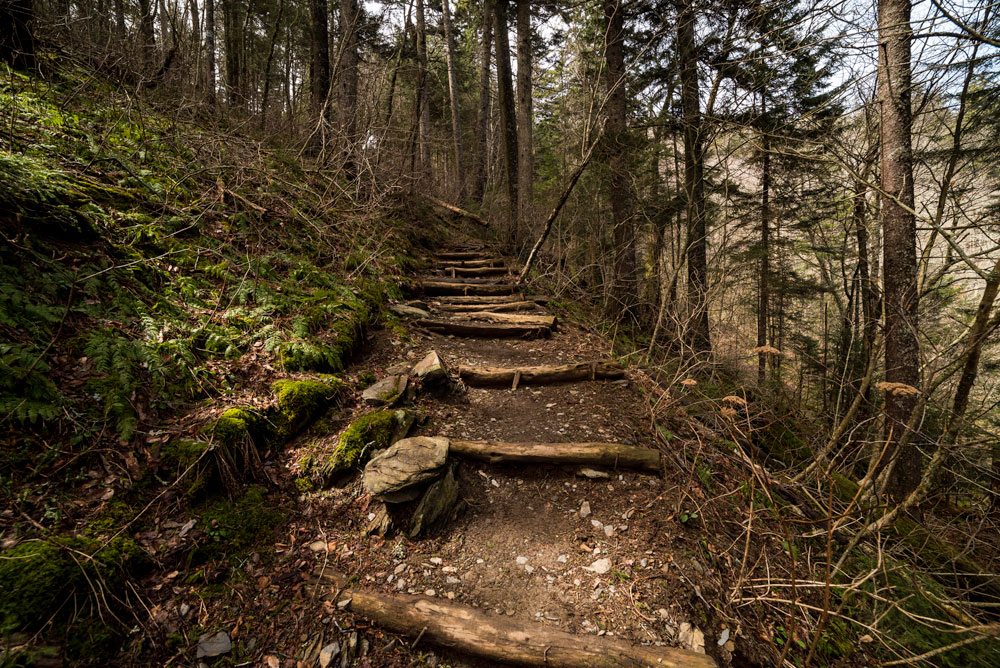
February 24, 2020; The Hill, Washington Post, and Quartz
When is “land” not land? This seems to be one of the questions before the US Supreme Court in the case of US Forest Service v. Cowpasture River Association, which pits environmentalists against industrialists who wish to build a gas pipeline from Georgia to Maine.
The Atlantic Coast Pipeline would carry natural gas 604 miles from West Virginia to North Carolina and would tunnel below the beloved and famed Appalachian Trail. While there are multiple lawsuits at play around this proposed pipeline, the one that reached the Supreme Court on Monday has only one major issue: Does the jurisdiction over the Appalachian Trail and the lands around it fall to the US Forest Service or to the National Park Service? Is this land available for energy development, or must it be preserved for recreational use only? This is what the justices of the Supreme Court were left to untangle, and in that tangled web falls the question of whether a “trail” counts as “land.”
The US Forest Service gave permits to the energy companies so they could proceed with pipeline construction through the national forests overseen by that agency. The Appalachian Trail, however, falls under the National Park Service, which is not part of the Forest Service. Federal law prohibits any federal agency from authorizing a pipeline in the national park system, which would seem to settle the matter cleanly. The 4th Circuit Court of Appeals agreed and revoked the Forest Service permit in 2018. Of course, this was appealed to the Supreme Court, and here’s where we find our arguments about what is and is not “land.”
Ephrat Livni, writing for Quartz about this case, indicates that both sides agree that no agency can grant a permit for drilling or pipelines on National Park Service territory. But the Forest Service argues that the Appalachian Trail isn’t “land” for these purposes. Based on three statutes read together—the Mineral Leasing Act, the National Trail Systems Act, and the National Park Service Organic Act—the federal government sees it as a “footpath, a “trail” that happens to be administered by the Park Service.
Justice Elena Kagan called this out in court when she noted that the pipeline lawyers were trying to verbally separate the trail from the land on which it sits.
“You’re great brief writers and you’re great writers, and the briefs are strange to read because you can’t ever just say what you mean,” Kagan said. “Which is that the trail is a piece of land, so you find yourself wrapped up in these strange locutions about the trail traversing land. It’s like you’re imagining something that goes on top of it somehow.”
Sign up for our free newsletters
Subscribe to NPQ's newsletters to have our top stories delivered directly to your inbox.
By signing up, you agree to our privacy policy and terms of use, and to receive messages from NPQ and our partners.
Chief Justice John Roberts wondered if siding with environmentalists would set up some sort of “impermeable barrier” that would block resources in the West from getting to the East where they were needed. He was told this was “absolutely incorrect.” by attorney Michael Kellog, who represented the environmental groups. He indicated that pipelines can cross through state and private lands as they do now.
“In the past 50 years, since the Trails Act was passed, there has not been a single new pipeline right-of-way through federal lands under the Appalachian Trail. There have been a number on state, local, and private lands,” he added.
It is hard to know how the Court will rule in this case. Will a trail be land? Will it be part of the Park Service? And if the ruling, expected in the spring, is favorable to the pipeline, they still have to deal with a number of other unfavorable rulings from the 4th circuit that threw out other permits they had acquired. These rulings have not (yet) been appealed to the Supreme Court.
Those who love the trail worry. Even though the pipeline would be underground, environmentalists say it would have a 50-foot-wide cleared path along its length.
“It will be very visible,” says Lynn Cameron, a board member for the Virginia Wilderness Committee, one of the plaintiffs in the case. “It’s hard to separate the Appalachian Trail from the scenic beauty that hikers come here to see.”
So there may be a reprieve for a while as hikers enjoy the beauty of the Appalachian Trail’s 2,192 miles of trails…or land…or whatever you might choose to call that path you walk on.—Carole Levine













